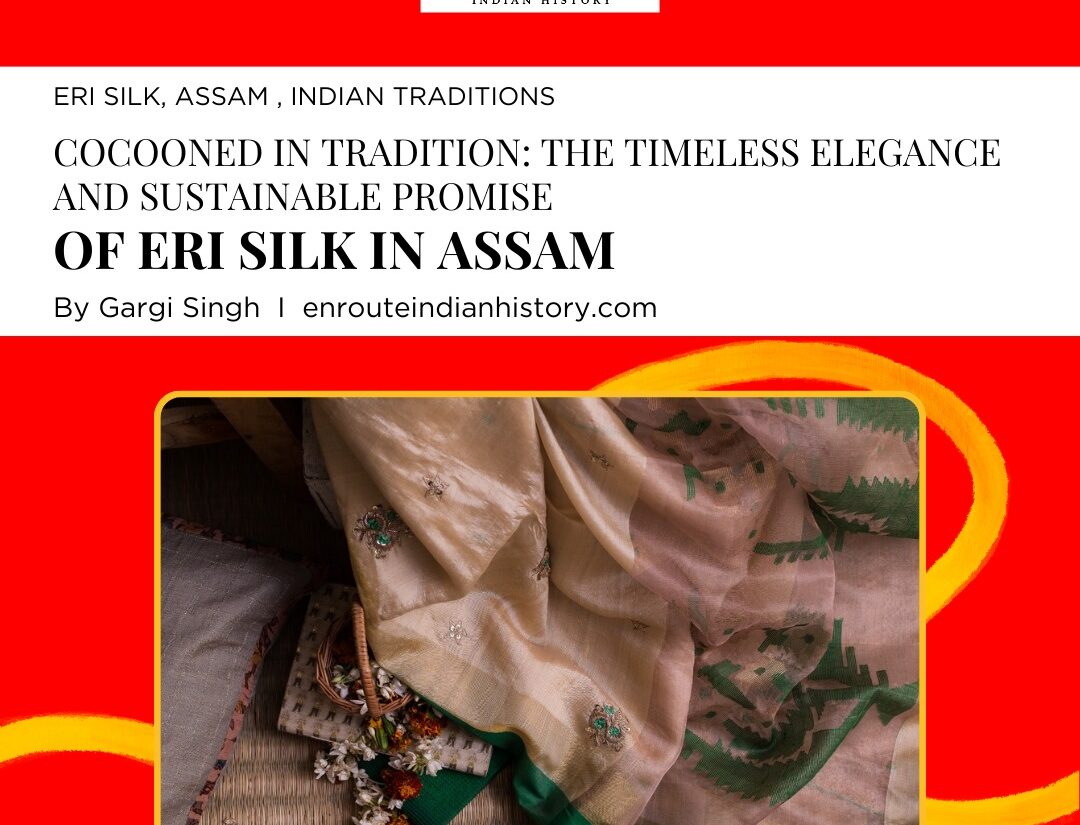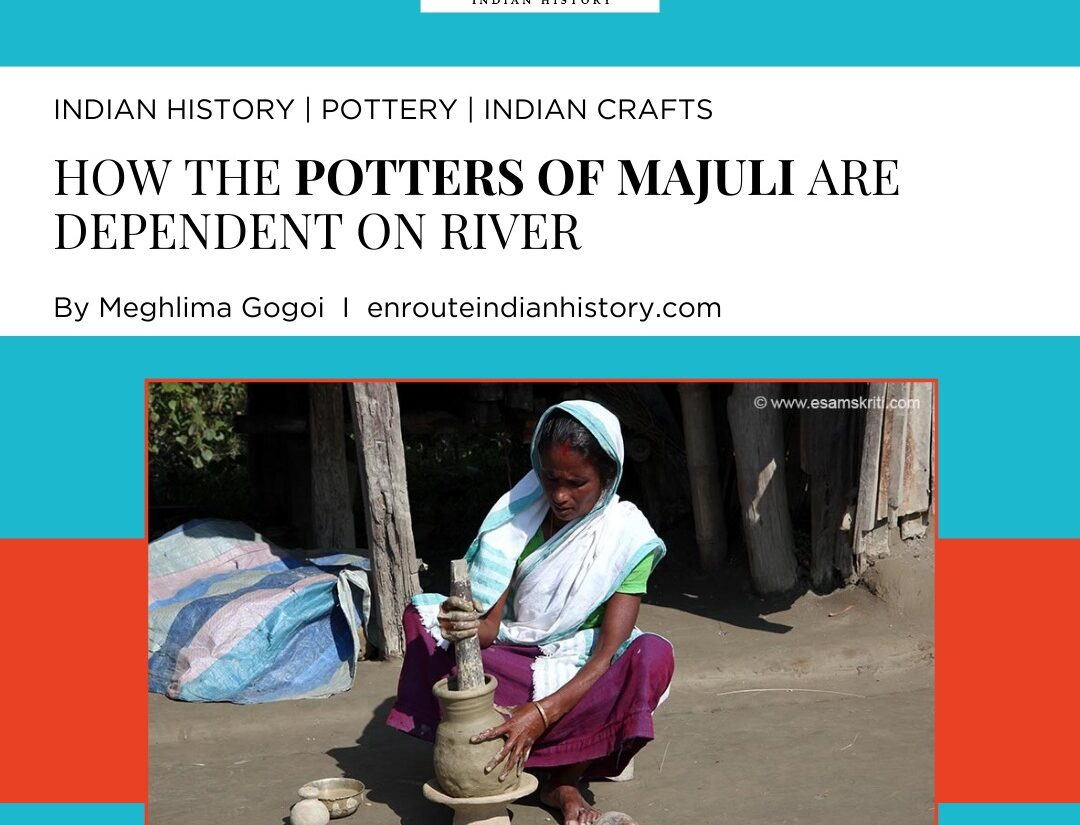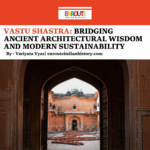Just like the gentle touch of the winter sun melts away the cold and brings comfort in the chilly winters to humans, Assam’s rich heritage brings a glow that transcends the threads of time to the land of the Mighty Brahmaputra. The earthly aroma of the freshly brewed chai narrates whispers of the glorious past that the state has, while the rhythm of the Sattriya dance carries the essence of the diverse cultural tapestry the state has to offer. The handwoven gamusa is more than just a marriage of red and white threads for the state; it is a silent bard that weaves the past and present together while uniting all the diverse communities within its borders. Much like the intricate patterns of the gamusa, the history of Assam would be incomplete without discussing the legacy of the Ahom kingdom.

India’s Prime Minister, Narendra Modi, attended a mass yoga session at the UN Headquarters Lawns, adorning the Assamese Gamusa. (Credits: New York Times)
One of the longest-reigning dynasties in the country, the Ahom kingdom was founded in 1228 and ruled Assam and its surrounding regions for nearly 600 years. In the shadow of the Mighty Brahmaputra, the Ahoms wrote an unparalleled tale of bravery, defeating the Mughals more than 17 times and remaining the only dynasty unsubjected to their rule. The Ahoms not only left a legacy of bravery but also a rich culture that is still practiced by members of the Ahom community, including the celebration of the departed souls in the festival of Mae Dam Mae Phi. The burial grounds of Ahom kings, queens, and nobles known as ‘Maidams’, which are vaulted mounds and now resemble green hills, are also part of the Tai-Ahom community’s rich heritage. These sites, which are currently on the tentative UNESCO World Heritage List, serve as poignant reminders of the Ahom kingdom’s historical and cultural richness.
WHAT ARE AHOM MAIDAMS?
After crossing the Patkai mountains, Chau-lung Siu-ka-pha, popularly known as Sukapha, who was a descendant of the Tai race and the first king of the Ahom kingdom, arrived in Assam from Mungmao, which is located in the district of Yunan in China at the present time. Following his departure from Mungmao, he was accompanied by a group consisting of a hundred soldiers, fifteen elite members, two elephants, and three hundred horses. In the course of his journey to the Brahmaputra valley in Assam, he successfully conquered the Khamjang region of Nagaland. He took control of Namrup, Tipam, and the regions between Disang and the Dikhow River, as well as the regions that were inhabited by the Moran and Borahi communities. The Ahom dynasty’s kings were generally chosen through primogeniture, which means that the right to inherit passed to the ruling family’s eldest son. However, the ministers also had the ability to vote for them. When a successor was deemed unworthy by the administration system, another prince from a different family but with the same royal bloodline could be elected. This rule was strictly followed; twice they could not find a suitable king, the administration system decided to function without one until a worthy ruler could be found, which are known as interim periods in Ahom history.
Sukapha named the first capital, Che-rai-doi or Che-tam-doi, which means “a dazzling city above the mountain” in Tai-Ahom language, and consecrated the site with a ritual. In spite of the fact that the kingdom moved from city to city and changed its capital over the course of its existence, the landscape of Che-Rai-Doi, or Charaideo, continued to maintain its status as the most sacred place within the kingdom, where the souls of the royals who had passed away could enter the afterlife. For 600 years, the Tai-Ahoms maintained their unique system of vaulted mounds, during which time many of them converted to Buddhism and others adopted the Hindus’ cremation practice. These Ahom equivalents of the ancient Egyptian pyramids are referred to as ‘Maidams.’ The term ‘Maidams’ originates from the Tai words, ‘Phrang-Mai-Dam’ or ‘Phrang-Mai-Tam’, where ‘Phrang’ means to put into grave and ‘Dam’ means spirit of death.

Maidams were the burial grounds of the Ahom kings, queens, and nobles. (Credits: Government of Assam)
Among the 386 Maidams that have been unearthed thus far at Charaideo, 90 royal burials stand out due to their exceptional preservation, completeness, and representativeness of the Ahoms’ mound burial tradition. A maidam is a vaulted chamber that is typically two stories tall and can be entered through an arched passageway. The hemispherical mud mound has layers of bricks and earth on top of it, and a polygonal toe wall reinforces the mound’s base. A layer of vegetation that resembled a collection of hillocks would eventually cover the mound, transforming the area into a green landscape with an arched gateway to the west. Archaeological excavations have revealed that every vaulted chamber contains a raised platform in the middle, which is where the body was laid. Royal insignia, objects made of wood, ivory, or iron, gold pendants, ceramic ware, weapons, and clothing to the extent of human beings (only from the Luk-kha-khun clan), which were used by the deceased during their lifetimes, were buried with the body for their subsequent journey to the after-life.

An aerial view of the maidams located in Charaideo, which is 30 kilometres away from the town of Sivasagar (Credits: IASbaba)
When constructing a maidam, there were a wide range of options available in terms of the materials and methods of construction that were utilised. From the 13th to the 17th centuries CE, wood was the primary material used for construction. However, beginning in the 18th century CE, stone and burned bricks of varying sizes were used for the inner chambers of the structures. Materials that were utilised in the construction of a maidam are documented in the Changrung Phukan, which is a canonical text developed by the Ahoms. This text documented the construction process that involved the use of bricks and stones that were cemented using a mixture of black pulse, molasses, eggs of duck, barali fish, and lime (derived from lime stone and snail shell). During the construction of the superstructure, various sized boulders, broken stones, bricks, and broken bricks were utilised. On the other hand, large stone slabs were utilised for the construction of the sub-substructure construction. Not only does the Changrung Phukan record the materials that were used in the construction of a moidam, but it also records the number of labourers, the duration of the works, the votive offerings that were made, and the rituals that were performed during the cremation of the royals. According to the hierarchy of the royal Ahoms, the rituals that were performed during the cremation process were carried out with great pomp and grandeur.
IN THE PURSUIT OF UNESCO STATUS
Charaideo, which is located in the foothills of the Patkai range, was the first capital of the Tai Ahoms and is considered to be the most revered landscape in the region. In accordance with their belief that their kings were gods on earth, the Tai Ahoms buried their deceased royals in Charaideo, since it was seen as the most sacred part of their kingdom. The continuity of this funerary for more than 600 years has resulted in the creation of a heritage that is reminiscent of the mountains of heaven and reflects the Tai Ahom belief of life, death, spirit, and the presence of the “other world.” A grand royal burial landscape exclusive to the Tai Ahoms can be seen in the maidams of Charaideu. These maidams have been systematically restored in order to protect their structural integrity, despite the fact that they were vandalised by treasure seekers in the early 20th century CE.
A comparison can be made between the maidams and the royal tombs of ancient China and the Pyramids of the Egyptian Pharaohs, which are both part of the ritual system and tradition of entombing a deceased royal. As a result of the movement of the Ahom capital to the south and east, maidams have been observed in various parts of Northern Vietnam, Laos, Thailand, Northern Burma, Southern China, and Northeast India, where Tai-Ahom culture is prevalent. The cluster of Maidams in Choraideo, Assam, stands out from the rest of this region due to its substantial size, high concentration, and the fact that it is situated in the Tai-Ahoms’ most sacred land.

Assam Chief Minister, Dr. Himanta Biswa Sarma, welcomed UNESCO Team led by Mr. Lim Chen in October 2023 (Credits: Himanta Biswa Sarma/Twitter)
Among the fifty-two other well-known locations located all over India, the Central Government of India made the decision in January 2023 to put forward the historic Maidams of Charaideo as the sole nomination of 2023-24 for UNESCO world heritage status. If selected, the Maidams will be the first World Heritage site in the category of cultural heritage in the North-East out of the 32 listed in the country. An announcement was made in March by Dr. Himanta Biswa Sarma, the Chief Minister of Assam, stating that the site had satisfied all of the technical requirements that UNESCO had set forth for its status and that it would move on to the subsequent stage of evaluation. The Maidams have taken a step towards being recognised by UNESCO on a global scale after being inspected by a team of experts from the UNESCO International Council on Monuments and Sites (ICOMOS), led by Mr. Lim Chen, in October 2023. Assam currently has two UNESCO sites in the natural segment: the Manas National Park and the Kaziranga National Park.
THE RISE OF ASSAMESE HERITAGE

MasterChef India Season 7 winner Nayanjyoti Saikia took cuisine from the state of Assam and North-Eastern region to a global level. (Credits: IndiaBlooms)
In the year 2023, the heritage of Assam became the focus of attention, capturing the hearts of people all over the world with its enduring allure and depth of cultural heritage. It became a lamp that shone brightly on the global stage, creating a story that was woven with tradition. Using local Assamese ingredients and adding a bit of Assamese flavour to the majority of their dishes, Nayanjyoti Saikia, the winner of MasterChef India Season 6, and Santa Sharma, the runner-up, took Assamese cuisine to a global level using their culinary skills. For the grand finale, while Santa prepared an Assamese platter that won the hearts of the judges due to its subtle yet powerful flavours, Nayanjyoti won the season’s championship by preparing a well-known delicacy from Assam, known as “Haah Kumura” (Duck Curry with Gourd), along with a sweet dish made from berries. Not only did Nayanjyoti and Santa manage to place Assamese cuisine on the cultural map of India, but they also managed to break many stereotypes that were associated with North-Eastern cuisine in general and Assamese cuisine in particular.

In 2023, Assam entered the Guiness Book of World Records with 11,000 dancers performing bihu in the same venue (Credits:PTI)
On April 14, 2023, the entire state of Assam rejoiced as the state set the Guinness World Record for the largest Bihu dance, with 11, 298 dancers dancing together to the same rhythm. One of the indigenous folk dances of Assam, the Bihu dance, is an essential component of the culture of the state. Due to the fact that the state government of Assam received 43 lakh handwritten essays on the Ahom general Bir Lachit Borphukan as part of the celebrations commemorating his 400th birth anniversary, the state went on to earn another Guinness World Record certificate for the highest number of essays written on a single individual in March 2023. Additionally, Swagat Yein, a rapper from Assam who goes by the stage name “Shady Mellow,” participated in the Indian reality show MTV Hustle 2.0 and brought the state of Assam to the forefront of the national stage. Not only do the lush green hills of Assam reverberate with the voice of the melodious cuckoo, but they also reverberate with the heartbeats of the people of Assam, which echo the sound of their rich culture.
REFERENCES
- www.tourgenie.com. (n.d.). Interesting Facts About Ahom Culture, Food, and Tradition in Assam. [online] Available at: https://www.tourgenie.com/travel-diaries/travel-blogs/interesting-facts-about-ahom-culture-food-and-tradition-in-assam
- Centre, U.W.H. (n.d.). Moidams – the Mound-Burial system of the Ahom Dynasty. [online] UNESCO World Heritage Centre. Available at: https://whc.unesco.org/en/tentativelists/5915/
- India Today NE. (2023). Assam’s Nayanjyoti Saikia wins MasterChef India title, cooks ‘Haah Kumura’ in finale challenge. [online] Available at: https://www.indiatodayne.in/entertainment/story/assams-nayanjyoti-saikia-wins-masterchef-india-title-cooks-haah-kumura-in-finale-challenge-535518-2023-03-31
- Guinness World Records. (2023). Largest Bihu dance. [online] Available at: https://www.guinnessworldrecords.com/world-records/99323-largest-bihu-dance
- Bureau, T.H. (2023). Assam sets record for most essays about single person. The Hindu. [online] 9 Mar. Available at: https://www.thehindu.com/news/national/other-states/assam-sets-record-for-most-essays-about-single-person/article66599037.ece
- www.guwahatiplus.com. (n.d.). Assam Rapper Selected For Second Round Of MTV Hustle. [online] Available at: https://www.guwahatiplus.com/assam/assam-rapper-selected-for-second-round-of-mtv-hustle
- Dutta, S. (n.d.). 600 years of Ahom Kingdom. [online] supriyadutta.in. Available at: http://supriyadutta.in/ahom-v2/
- sivasagar.assam.gov.in. (n.d.). Maidams | Sivasagar | Government Of Assam, India. [online] Available at: https://sivasagar.assam.gov.in/tourist-place-detail/398
- November 1, 2023
- 6 Min Read
- October 20, 2023
- 8 Min Read
- August 17, 2023
- 6 Min Read



















